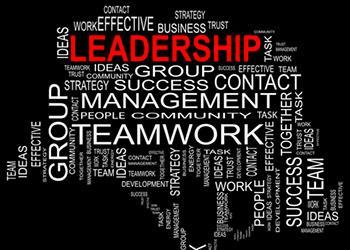New 2016 Forecasts Expect Decreases in Charitable Giving in 2016
Raising funds for charitable organizations is, at its best, a challenge, and at its worst, like climbing Everest! Nonprofit leaders are pulled in many directions as they seek to grow and sustain, operate the business side of their organization and continue to conduct and develop programs that have measurable impact on those they serve. A tug of war in nonprofit leadership often happens between the focus on mission and the focus on money. And simply put, mission is difficult to achieve without money.
As I was preparing to write this blog today I went back to the Foundation Center to pull from an article I had seen just recently that forecasted continued growth in charitable giving in 2016. But to my dismay, instead I found a new article entitled 2016 Outlook for U.S. Giving Weakens Amid Uncertainty. I recommend that you read the article in its entirety here. At its heart the article points to decreases in giving impacted by a volatile stock market. While this is alarming news, it adds fuel to the advice to be sure your nonprofit creates a diverse funding base for times like these.
Just as families are well-advised to develop multiple streams of income to ensure financial security, today’s successful nonprofits are continually thinking of ways to diversify their funding sources. Fortunately, there are many options for nonprofits to consider to brace themselves against financial insecurities. The top five most utilized strategies for fund development are as follows.
- Grant Funding:
Conventional wisdom in the nonprofit field is to seek to raise about 30% of your budget in the form of grants. While the grant world continues to be highly competitive, nonprofits who are well-prepared for the rigors of grant seeking continue to receive grant funds to help them with general operating costs, capacity building, project-specific costs, etc. While the larger grants are typically reserved for larger nonprofits, we also have seen significant success for smaller organizations. Grant seeking continues to be a viable way to help grow and sustain a nonprofit. - Individual Donors:
Depending upon the type of nonprofit, individual donor giving can be a cornerstone for nonprofit income. The philosophy rests upon many people giving small to mid-size regular donations, theoretically decreasing the chances that all donors won’t stop giving at the same time. This continues to be a key fundraising strategy, but is not without its downside. Effectively running an individual donor program can be very time consuming and can become expensive. At its core, this type of fundraising must include well developed relationship building and well-timed, heartfelt gratitude to the donors. - Online giving:
At a minimum, nonprofits should include a giving button on their websites. For those who can afford online marketing help to increase online giving, the rewards can be very significant. One only need to look at the success of crowdfunding campaigns and the like to see that online giving is a recognized part of nonprofit fundraising. You might also take a look at sites like Give Back Nation for additional options for online giving. - Social Enterprise:
It is very exciting to see the myriad of ways nonprofits are raising funds today through social enterprise. Leaders are thinking way past bingo and thrift shops. Some of my favorite social enterprise examples include the development of the Winter the Dolphin movie (and all of its ancillary products) by Clearwater Marine Aquarium and a recent small nonprofit, Eye Heart World, I just spoke with today whose online sales of high end bags is helping to fight sex trafficking. For more information on social enterprise check out the Social Enterprise Alliance. - Planned giving:
Opportunities for planned giving have expanded significantly over the last decade. New products have been developed to help individuals give in increasingly meaningful ways. While developing a planned giving program is not typically within reach of very small nonprofits, mid to large organizations can often afford giving programs in partnership with organizations such as Give Back Nation mentioned above. A good source for this information across the country is Give Back Nation. - Fundraising Events:
Nonprofit events have taken on a life of their own! Virtually every weekend you can find a fun nonprofit event to attend. While banquets, galas and golf tournaments remain favorites, nonprofits are continually inventing new experiences. Recently I attended a gala with The One Roof Initiative in which I had the opportunity to participate in a drum circle, paint with a new friend and dance a waltz to the theme from The Titanic with a new friend in a wheelchair. This was not your run-of-the-mill gala! It is critical to analyze your fundraising events beyond simple gross and net revenues. To analyze for “true” ROI, you must also consider potential negative impact of the event on your staff and your volunteers along with determining the new friends you attracted. Events are very hard work for already pressed nonprofit staff members. As a rule of thumb, two bigger fundraising events per year are plenty for a nonprofit. (If you’d like to learn more about how to evaluate for true ROI, send me an email at jule@pathwaystogrowth.us).
Question: What are some of the ways your nonprofit is working to diversify its income streams?











